The Ultimate Two-Loaf Babka Recipe: Swirled with Rich Chocolate and Sweet Fruit Preserves
There’s nothing quite like the aroma of freshly baked babka filling your home. This easy-to-follow recipe yields two magnificent loaves, making it perfect for sharing with loved ones or savoring one now and freezing the other for later. While many think of babka as a complex pastry, our method simplifies the process without compromising on flavor or that iconic swirled appearance. This particular recipe beautifully highlights the natural sweetness and tang of fruit preserves, but also incorporates generous amounts of chocolate, firmly placing it in the category of a truly decadent chocolate babka. And while you certainly *could* make it without the fruit preserves, their vibrant taste and luscious texture complement the rich, buttery dough in a way that truly elevates each bite.
Jump to Recipe
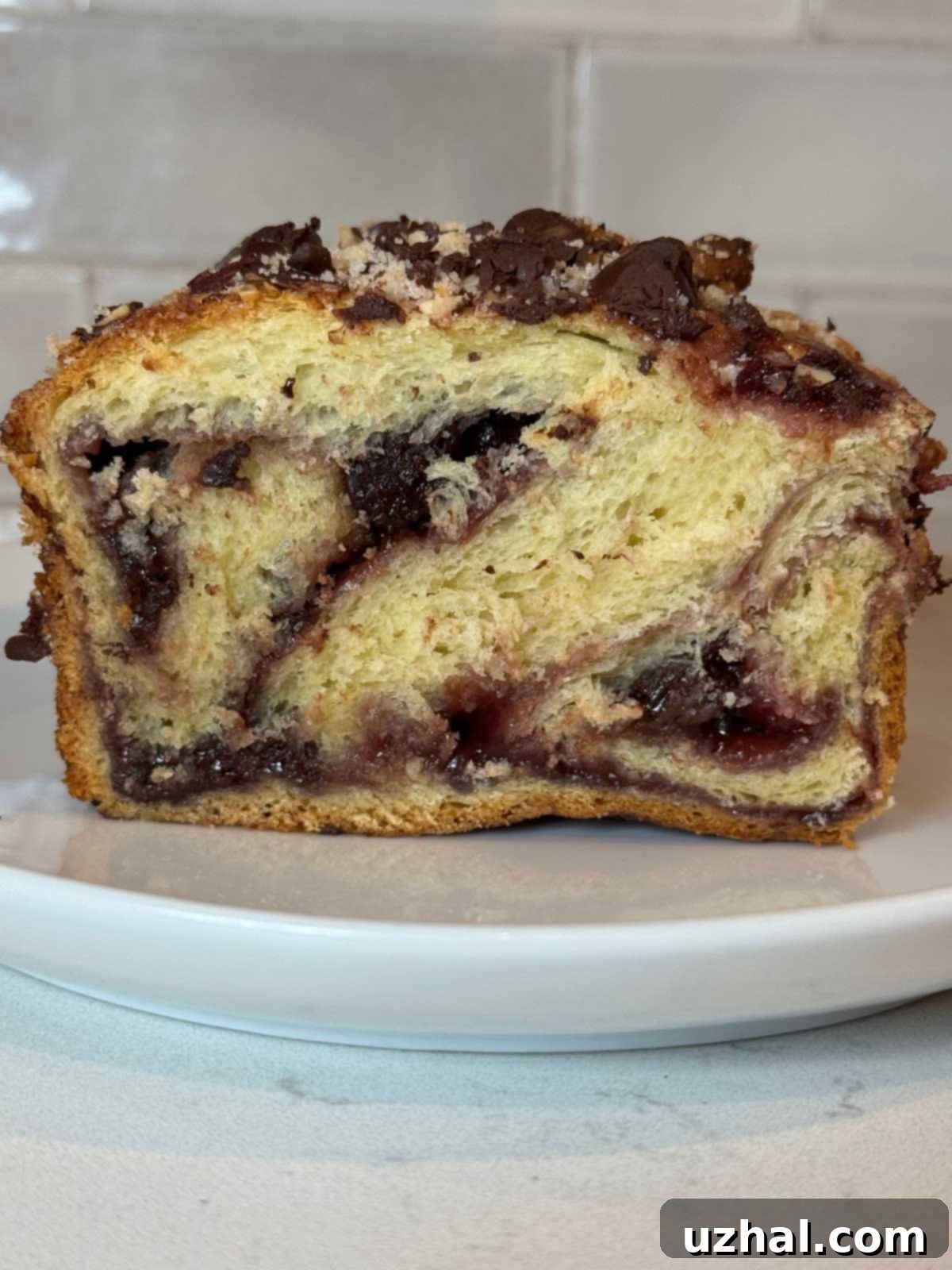
Crafting Two Delicious Babka Loaves
Our recipe is thoughtfully designed to produce two generously sized 8.5 by 4.5-inch babka loaves. This dual-loaf approach offers incredible versatility and convenience. Imagine gifting one beautifully baked babka to a friend or neighbor, while keeping the other for your family’s enjoyment. Or, perhaps you want to indulge in one immediately and freeze the second loaf, ready to be defrosted and enjoyed whenever a craving strikes. This also opens up a world of flavor customization. If you prefer not to include fruit preserves in both, you can easily create an all-chocolate masterpiece in one loaf, or even get creative with other fillings. We’ve experimented with everything from a rich nutella swirl to a fun Butterfinger babka (though I can’t claim it’s “Bubbe’s Famous” since I’m not a bubbe, it was certainly a delicious adventure!). Having two loaves truly allows for culinary exploration and ensures you always have a delightful treat on hand.
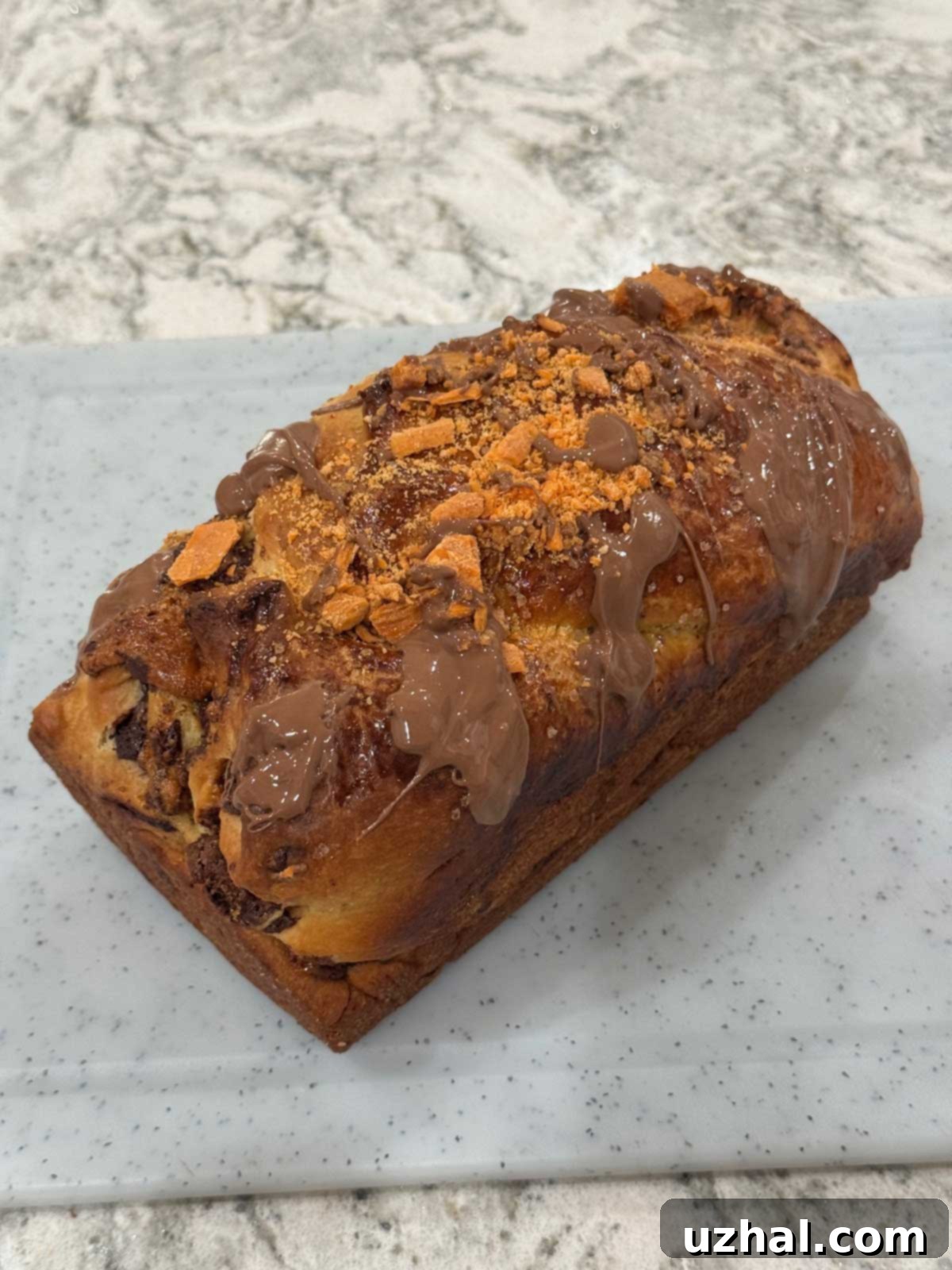
The Secret to Perfect Babka Dough
The foundation of any exceptional babka lies in its dough, and ours is no exception. We begin with a butter and egg-rich dough, remarkably similar in texture and richness to a classic brioche. This luxurious base is what gives babka its distinctive tender crumb and subtly sweet flavor. The beauty of this dough is how incredibly manageable it is, especially when prepared using a stand mixer. The mixer does all the hard work of kneading, resulting in a smooth, elastic dough that’s a joy to handle. In fact, it’s so pliable that you might find a rolling pin is entirely optional; I often just pat it out evenly on a pastry mat with my hands. This ease of handling makes the entire babka-making process much less intimidating, even for those new to yeast baking. Here’s a peek at the dough as it rises, proofing beautifully and developing its airy structure.
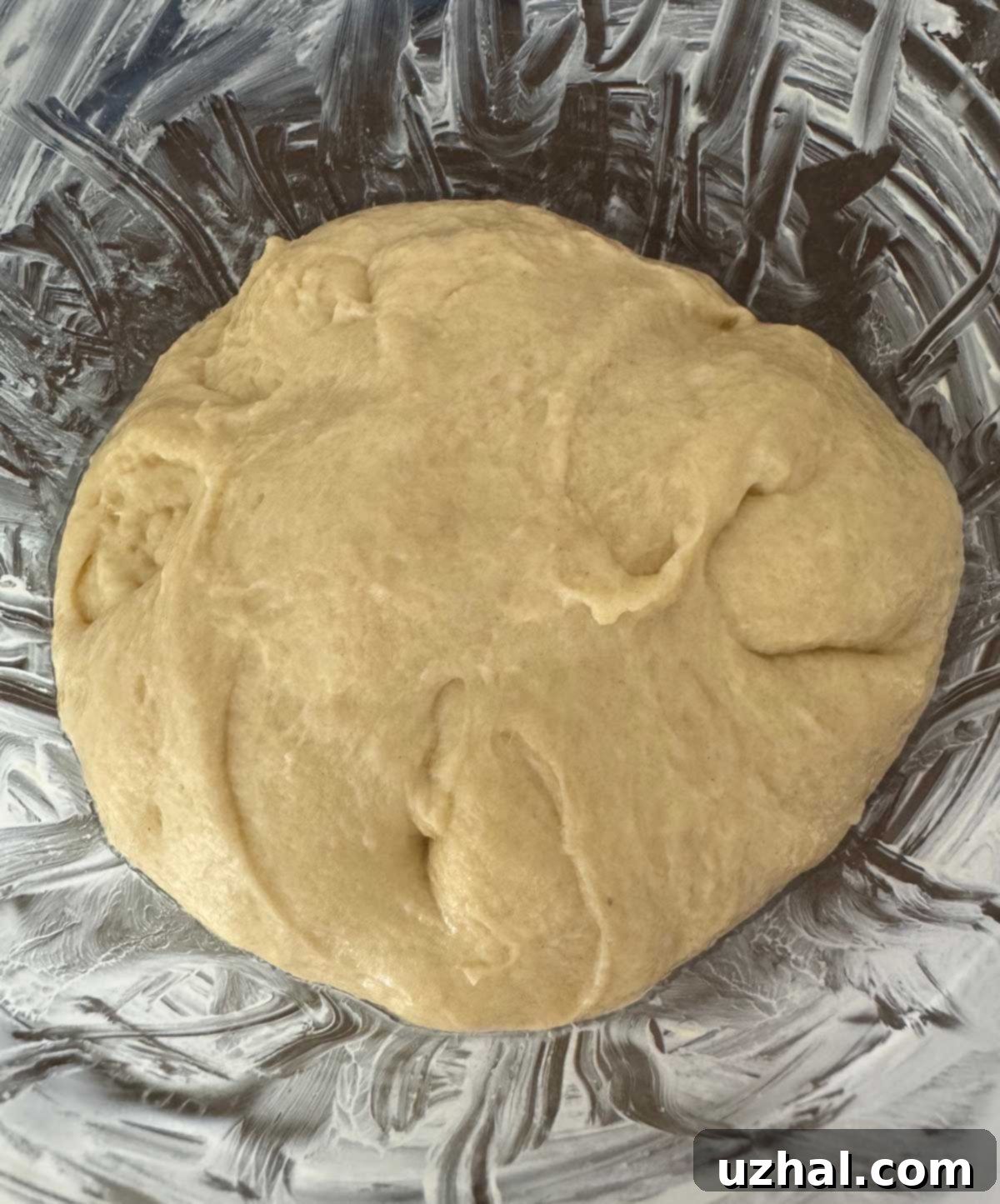
Once risen, the dough is then ready to be gently patted out to its desired dimensions – typically around 15 x 11 inches – providing the perfect canvas for your chosen fillings.
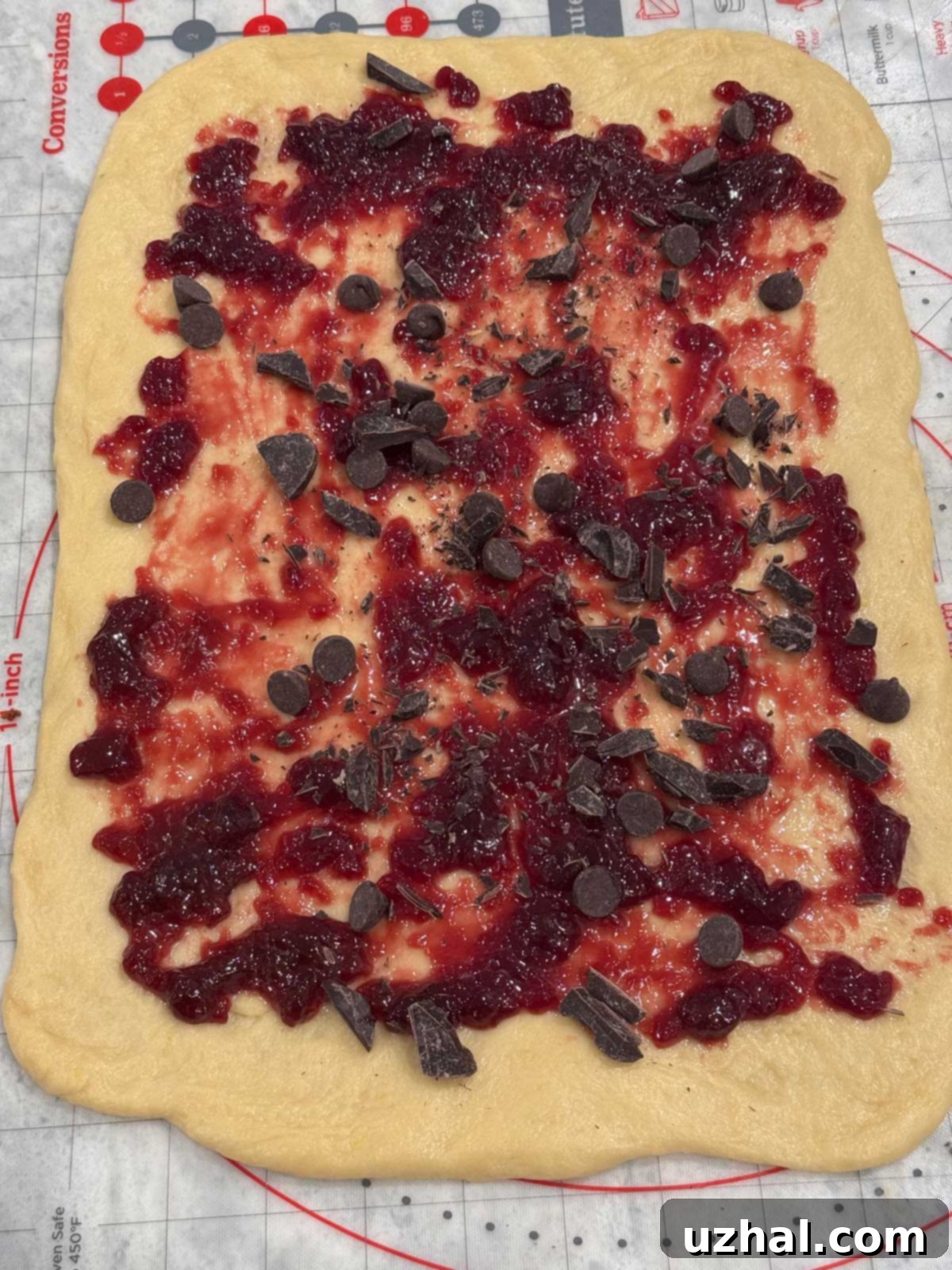
Mastering the Art of Babka Shaping
Shaping babka is a crucial step that creates those mesmerizing swirls of dough and filling. It’s a technique that’s easier than it looks and incredibly satisfying. First, you’ll roll or pat your risen dough into a neat rectangular shape. This rectangle then becomes the canvas for your decadent filling, which you’ll spread evenly across the surface, leaving a small border to help seal it. The next step involves rolling the dough tightly from one of the long sides, much like you would a jelly roll, forming a compact log. To ensure a clean cut and prevent the delicious filling from oozing out during the next stage, a brief stint in the freezer is highly recommended. This chilling firms up both the dough and the filling, making it much easier to handle. Once chilled, you split the log lengthwise, exposing those beautiful layers of dough and filling. The grand finale is twisting these split halves together, creating a beautiful braid-like pattern that will become the signature swirl of your baked babka. The visual appeal of a properly shaped babka is almost as delightful as its taste.
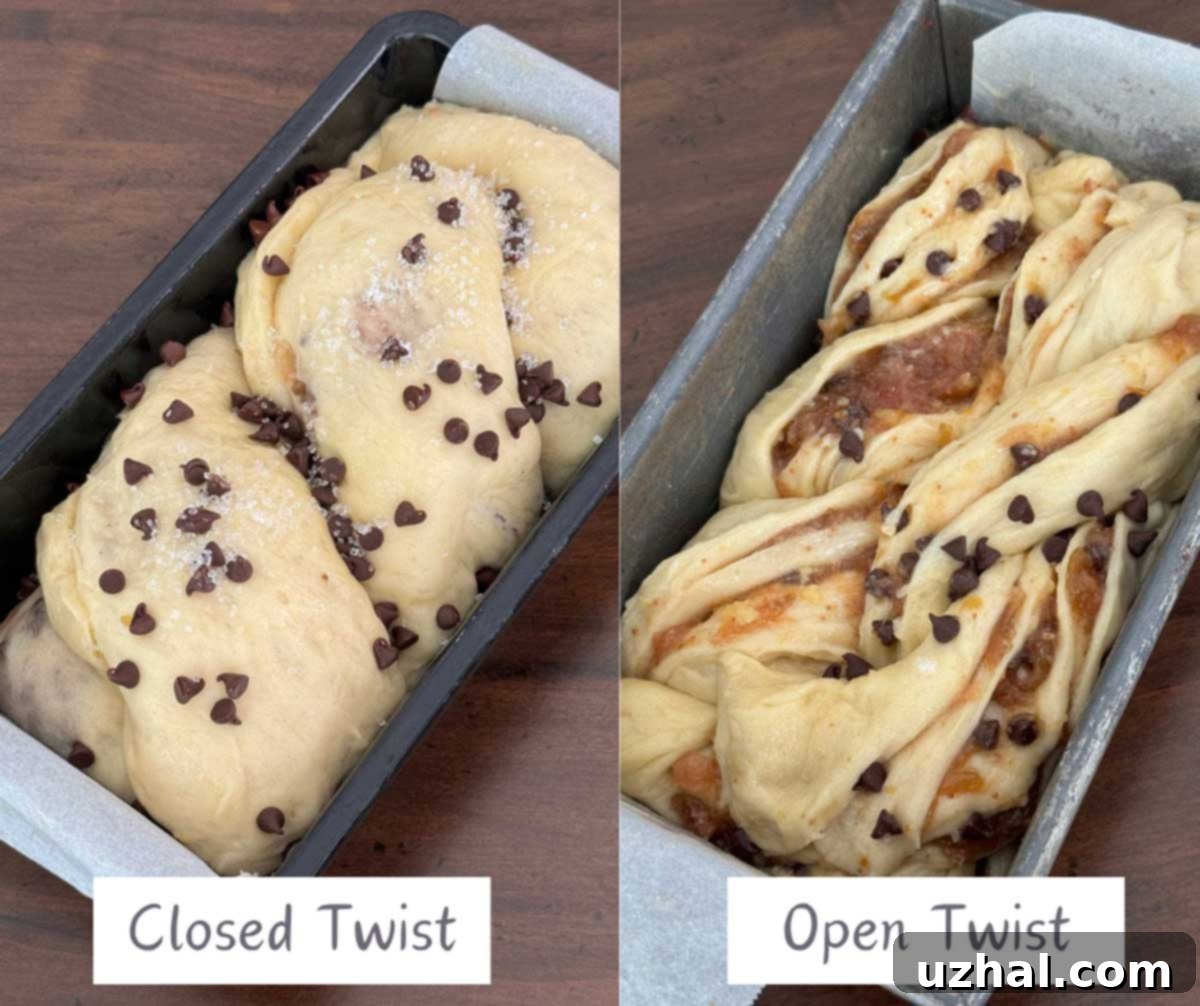
However, if the traditional split-and-twist method feels a bit daunting, or if you’re simply in a hurry, you can certainly simplify the shaping. Instead of splitting lengthwise, you can cut the log in half crosswise and simply twist the two halves together. The loaf on the left in the picture above demonstrates this simpler approach, offering a beautiful, rustic swirl. For a slightly more intricate yet still straightforward design, you can cut the log in half crosswise, then split each half lengthwise to create four pieces. Twisting these four pieces together yields a magnificent, multi-layered babka that’s sure to impress. Both examples shown here are generously filled with luscious fig preserves, proving that beautiful results are achievable with various shaping techniques.
Exploring Diverse Fillings: Preserves and Chocolate Pairings
One of the most exciting aspects of making babka is the endless possibilities for customization, especially when it comes to fillings. While chocolate is a given in this recipe, the choice of fruit preserves allows for a wonderful interplay of flavors. During fig season, fig preserves were an obvious and inspired choice. The rich, earthy sweetness of figs, I discovered, pairs surprisingly well with dark chocolate, creating a sophisticated and utterly delicious combination. Beyond figs, chocolate and raspberry is an undeniably classic pairing that always delivers a burst of tangy sweetness against the chocolate’s richness. But don’t limit yourself! Apricot, cherry, or a mixed berry preserve would also be fantastic. The key is to choose a high-quality preserve that you genuinely love. For the chocolate component, you also have several excellent options. Mini chocolate chips are incredibly convenient and distribute evenly throughout the dough. However, for a more intense chocolate experience, I often prefer to mix whatever dark chocolate chips we have on hand with some finely chopped dark chocolate. This combination provides varying textures and a deeper cocoa flavor. And, for those adventurous bakers, yes, the Butterfinger option I mentioned earlier is a fun and unexpected twist – although I still haven’t cut into that experimental loaf yet!
Essential Ingredient Notes for Babka Success
- Bread Flour: Using bread flour is highly recommended for this babka recipe. Its higher protein content contributes to a stronger gluten structure, making the dough more elastic and easier to work with, especially during the rolling and twisting stages. When measuring by weight, I consistently use 140 grams per cup for bread flour. I advise starting with 4 cups (560 grams) and gradually adding the last half cup (70 grams) as needed, observing the dough’s consistency. If using all-purpose flour, begin with 560 grams, which might be slightly more than 4 ½ cups, as all-purpose flour can sometimes be lighter per cup. You would then incorporate another 70 grams, which amounts to a little over half a cup, adjusting until the dough reaches the desired texture.
- Sugar: The sugar in this recipe isn’t just for sweetness; it plays a vital role in activating the yeast and contributes to the overall tender texture of the babka. Despite the amount, the finished loaves are balanced and not overly sweet, making them perfect for breakfast or dessert.
- Yeast: This recipe truly shines with SAF gold label yeast. This specific type of instant yeast is formulated for high-sugar doughs, ensuring a robust rise and excellent structure. While other brands of instant yeast will certainly work effectively, I’ve found SAF gold label consistently delivers superior results for rich, sweet breads like babka. Ensure your yeast is fresh and active for the best rise.
- Lemon or Orange Zest: Both citrus zests are optional, but I highly encourage their inclusion. Just a small amount of finely grated zest introduces a bright, fresh counterpoint to the richness of the dough and complements the fruit preserves beautifully, adding an extra layer of flavor complexity.
- Whole Milk: For baking, whole milk is my preferred choice due to its higher fat content, which adds richness and moisture to the dough. However, given the substantial amount of butter already present in this babka dough, 2% milk would also work perfectly fine without significantly impacting the final texture or flavor.
- Eggs: It is crucial to use large eggs as specified. Using extra-large eggs could introduce too much liquid, while medium eggs might not provide enough hydration and richness, potentially altering the dough’s consistency and final texture. Ensure eggs are at room temperature to incorporate easily into the dough.
- Unsalted Butter: We specify unsalted butter to give you complete control over the salt content in your recipe. Any reputable brand of unsalted butter will work well. While I haven’t specifically tested with salted butter, if you do use it, you might want to slightly reduce the added salt in the dough to avoid an overly salty flavor.
- Oil: The inclusion of a small amount of neutral oil, such as olive oil, alongside butter is a deliberate choice. In my experience, this combination helps to improve the texture of the babka, making it even more tender and moist, while also judiciously saving on butter without sacrificing richness.
- Preserves: Any flavor of fruit preserves you adore can be used in this recipe. My personal preference is for seedless varieties, as they provide a smoother texture within the finished babka. A crucial tip for the preserves filling is to mix them with a bit more melted butter. This not only enhances the flavor and richness but also helps to prevent the preserves from completely sinking into the dough during baking, ensuring those beautiful, distinct layers.
Making babka is a rewarding experience, and this recipe is designed to guide you to two perfect loaves. I truly hope you give it a try and discover the joy of homemade babka!
- Chocolate Peanut Butter Babka
- Chocolate Babka Mini Loaves or Regular
- Chocolate Babka Made With Crescent Dough
- Green’s Babka from Brooklyn
- Chocolate Hazelnut Babka with Nutella
Recipe
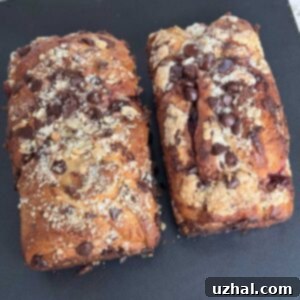
Babka with Fruit Preserves and Chocolate
Anna
Pin Recipe
Ingredients
- 4 cups bread flour plus about ½ cup or as needed (560 grams), plus (70 grams) more as needed
- ½ cup granulated sugar (100 grams)
- 2 ¼ teaspoons instant yeast (SAF Gold Label recommended)
- 1 teaspoon fine sea salt
- ½ teaspoon freshly grated orange or lemon zest (optional)
- 1 cup whole milk, warmed to 130°F (54°C) (230 grams)
- 3 large eggs, at room temperature
- 6 tablespoons unsalted butter, softened, plus extra for greasing pans (84 grams)
- 3 tablespoons olive oil or any neutral tasting oil (33 grams)
Preserves & Chocolate Filling
- 3 tablespoons unsalted butter, melted (42 grams)
- 1 ½ cups fruit preserves (raspberry, fig, apricot, or your favorite!), preferably seedless
- 1 cup miniature or regular size semisweet chocolate chips, or finely chopped dark chocolate
Crumb Topping (Optional)
- ¼ cup all-purpose flour
- ⅓ cup powdered sugar
- 2 tablespoons plus 2 teaspoons salted butter, softened
Egg Wash
- 1 large egg
- 1 tablespoon milk
Instructions
-
In the bowl of a stand mixer fitted with the paddle attachment, combine 4 cups (560 grams) of bread flour, granulated sugar, instant yeast, salt, and optional orange or lemon zest.
-
Add the warm milk and stir until all dry ingredients are moistened. This can be done with the paddle attachment on low speed or by hand. Once moistened, add the room temperature eggs and mix until they are fully blended into the dough.
-
Switch to the dough hook attachment. With the mixer running on low speed, gradually add the olive oil, followed by the softened unsalted butter, one tablespoon at a time. Continue kneading until the butter is completely incorporated into the dough. At this stage, the dough will be very soft, rich, and likely quite sticky, indicating it will need additional flour.
-
Gradually add the remaining 70 grams of flour (about ½ cup) in small increments. With each addition, the dough will initially pull away from the sides of the bowl before becoming slightly sticky again. Continue kneading for approximately 8 minutes, or until the dough becomes smooth, elastic, and feels manageable. Note that it will remain soft and slightly tacky, and may not completely clear the sides of the bowl – this is normal for a rich babka dough.
-
Lightly oil a large bowl, place the dough inside, and turn it once to coat. Cover the bowl tightly with greased plastic wrap and let it rise in a warm, draft-free place until it has doubled in size, which usually takes about one hour. While the dough is rising, prepare your loaf pans, preserves filling, and crumb topping.
-
To prepare two 8.5 x 4.5-inch loaf pans, generously grease them with extra butter. Line the bottoms and long sides with strips of parchment paper, allowing an overhang for easy removal, then grease the parchment paper again. The extra greasing is essential as the preserves can be quite sticky during baking.
Preparing the Filling and Crumb Topping
-
Melt the 3 tablespoons of unsalted butter for the filling in a small saucepan over low heat or in a microwave-safe bowl. Stir the fruit preserves into the melted butter until well combined. Set this mixture aside to cool completely before using.
-
The crumb topping is an optional but wonderful addition, providing extra texture and sweetness. To make it, combine the flour and powdered sugar in a small bowl. Add the softened salted butter and use your fingertips or a pastry blender to mash it into the dry ingredients until coarse crumbs form. Chill the crumb topping until you are ready to use it.
Assembly and Baking
-
Once the dough has doubled, gently punch it down and divide it in half. On a lightly floured pastry mat (the buttery dough often needs little flour), pat one half of the dough into a roughly 10×15-inch rectangle.
-
Evenly spread half of the cooled preserves mixture over the entire rectangle, leaving approximately a ½-inch border clear around the edges. Sprinkle half of the chocolate chips or chopped chocolate over the preserves. In a small bowl, whisk together the egg and milk for the egg wash. Lightly brush the clear border of the dough with some of this egg wash to help seal the roll.
-
Starting from one of the long sides, carefully and tightly roll the dough into a jelly-roll style log. Pinch the ends firmly to seal the filling inside. Cut this log in half crosswise. Place these two log halves on a baking sheet or tray that can fit into your refrigerator or freezer. Repeat the entire process with the remaining half of the dough and the other half of the filling, placing the new log halves on the same baking sheet.
-
Refrigerate or freeze the four babka logs for about 30 minutes. This chilling step is crucial as it firms up both the dough and the sticky filling, making them much easier to slice and twist without losing their shape or filling.
-
Once the logs are very firm, take two out of the refrigerator. Using a sharp knife, slice each log lengthwise through the center to expose the beautiful layers. Carefully twist the two halves together, ensuring the cut sides face upwards to showcase the swirl. Gently press the twisted loaf into one of your prepared loaf pans, pinching the ends slightly if needed. Alternatively, for a more intricate look, you can split each of the two logs lengthwise to create four pieces. Twist two of these pieces together and lay them in the pan, then twist the other two and lay them alongside the first two, pinching ends to form a cohesive loaf. Remove the remaining two logs from the refrigerator and repeat the shaping process for the second babka.
-
Cover the shaped babkas loosely with a piece of plastic wrap that has been lightly greased on the underside to prevent sticking. Allow them to rise in a warm place for approximately 45 minutes. The dough will visibly rise a bit, but it will not completely double in size like the first rise.
-
Meanwhile, preheat your oven to 350°F (175°C). When the babkas are ready to bake, gently brush the tops of the loaves with the prepared egg wash. If using, sprinkle the crumb topping generously over the top. You can also add a little extra chocolate or a sprinkle of sliced almonds or chopped nuts for added texture and flavor.
-
Bake the loaves for about 55 minutes, or until they are deeply golden brown on top and baked through. If the tops are browning too quickly, you can loosely tent them with aluminum foil for the remainder of the baking time.
-
Allow the baked babka loaves to cool in their pans for about 30 minutes. This allows them to set and firm up slightly. Then, carefully loosen the edges with a thin knife and use the parchment paper overhangs to gently lift them out of the pans onto a wire rack to cool completely. Enjoy!
